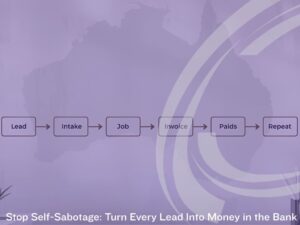Pragmatism Wins

How Australian Businesses Turn AI Hype Into Real Results
Australian leaders carry a heavy load. Growth targets are tight. Costs are rising. Customers want faster answers and better service. Many teams have tried generative tools in small pilots. Only a few have turned those tests into sustained results. That is where pragmatic AI for Australian businesses makes a difference.
This article is a field guide for founders, executives, and boards. It explains how to identify the right use cases. It shows how to design guardrails that work. It gives a straightforward approach to scale what succeeds and stop what does not. The focus is practical action, not hype. The goal is simple. Help you turn ambition into outcomes with pragmatic AI for Australian businesses.
What the global shift teaches Australia
Across the world, organisations are moving from curiosity to execution. Adoption of new AI tools has surged in a short time. Leaders who win do not chase every feature. They focus on processes that move revenue, cost, or risk. They combine models and services rather than relying on a single vendor. They learn that technology is often the easy part, and human change is the hard part.
These lessons travel well. They show why pragmatic AI for Australian businesses must start with real work and measures. They also show why local factors matter. Australia has its own policy settings, privacy rules, competition concerns, and cyber baseline. Good decisions respect those settings from day one.
Australia’s context at a glance
The Australian environment shapes how you build and scale. Keep these points at the front of mind when planning pragmatic AI for Australian businesses.
- Policy is evolving. The Australian Government has set a direction for safe and responsible AI. Higher-risk settings will face stricter rules. Businesses that plan governance early will move faster later.
- Privacy reforms are tightening. Expect clearer expectations for data handling, automated decisioning, and complaint response. Plan for transparency and record-keeping.
- Cloud concentration risk is real. The ACCC continues to examine digital platforms, search, cloud, and AI supply chains. Portability matters. Choose partners wisely.
- Cybersecurity remains a baseline. The Essential Eight still applies. AI workflows sit on systems that need patching, hardening, backups, and recovery drills.
- Productivity growth is a national priority. AI can lift productivity if leaders apply it to repeatable processes and track results.
- SME adoption is rising, yet many firms still want practical guidance. Clear governance and change support help adoption spread across teams.
These settings reward a steady approach. The best path forward is pragmatic AI for Australian businesses, built on value, safety, and speed.
A simple roadmap that works
Start with value. Design only what you need to deliver that value. Scale what works. This is the core of pragmatic AI for Australian businesses.
Pick five use cases that move a P&L needle.
Choose cases that occur frequently and affect revenue or costs. Attach one metric to each.
Examples:
- Revenue drivers: lead qualification, price support, sales email drafting, cross-sell prompts, proposal outlines.
- Cost reducers: invoice coding, claims triage, service routing, inventory checks, supplier risk scanning.
- Risk controls: policy summarisation, privacy request handling, incident response support, fraud flags.
Select the first two to test. Keep the others parked. This focus speeds proof for pragmatic AI for Australian businesses.
Write a one-page charter and control set
A short charter aligns teams and reduces risk. Include:
- Purpose, scope, and approved tools.
- Roles for sponsors, product owners, and risk leads.
- Data usage rules, retention, record keeping, and escalation.
- Human review points for decisions that carry material risk.
- Alignment with privacy reforms, cyber guidance, and board oversight.
This keeps pragmatic AI for Australian businesses safe and predictable.
Form a small delivery squad
Small squads ship faster. A proven mix is:
- A product owner with budget and authority.
- A frontline process user.
- A data engineer or analyst.
- A prompt and model specialist.
- A risk partner across privacy and security.
- A change and training lead.
This cross-functional team design is a hallmark of pragmatic AI for Australian businesses.
Partner across the stack
Most teams need a blend of models, tools, and compute. Match models to tasks. Secure data paths. Negotiate portability. Set clear service levels. Plan for cost control and usage limits. This partnering mindset sits at the heart of pragmatic AI for Australian businesses.
Prove value within 90 days, then scale
Fix the baseline. Run the pilot. Publish results. If the case hits the target, scale to more users or more sites. If it misses, fix it or stop it. This loop turns ideas into results and powers pragmatic AI for Australian businesses.
Nine principles that lift trust and cut risk
- Keep people in the loop for higher-risk calls.
- Minimise data. Use the smallest set that meets the goal.
- Track inputs and outputs for audit and learning.
- Protect intellectual property. Avoid pasting sensitive content into consumer tools.
- Start with strong cyber hygiene. Test backups and recovery.
- Check for bias that could harm customers or staff.
- Make actions explainable at the right level for the risk.
- Provide clear escalation paths for users.
- Tie every use case to a metric and a dashboard.
These principles anchor pragmatic AI for Australian businesses in daily practice.
The AI value stack, simplified for local teams
Layer 1, Business outcomes
Define the outcome first. Revenue, cost, risk, or customer experience. This is the why behind pragmatic AI for Australian businesses.
Layer 2, Process and data
Map the steps and systems of record. Fix the two data issues that block your first use case. This is enough to start.
Layer 3, Models and tools
Select models that match each task. Balance accuracy, latency, and cost. Consider open, proprietary, and domain-specific options. Good choices support pragmatic AI for Australian businesses without overbuilding.
Layer 4, Platform and compute
Balance convenience with portability. Avoid lock-in where you can. Maintain an exit plan. This protects pragmatic AI for Australian businesses as you scale.
Layer 5, Governance and security
Embed privacy, security, and records management from day one. This keeps approvals smooth and trust high.

Where the money is, high-yield use cases by sector
The best cases repeat often and influence revenue or cost. They also improve customer or staff experience. The examples below can prove pragmatic AI for Australian businesses within a quarter.
Services and professional firms
- Draft engagement letters, proposals, and scope clarifications.
- Summarise interviews and create action lists.
- Speed WIP reviews and billing checks.
- Support compliance updates and board packs.
Retail and e-commerce
- Personalised product discovery and post-purchase support.
- Dynamic FAQs and returns handling.
- Supplier performance scanning and stock alerts.
- Catalogue enrichment for marketplaces.
Manufacturing and logistics
- Predictive maintenance suggestions from operator notes.
- Safety procedure summaries and induction chat support.
- Transport exception handling and claim triage.
- Quality incident reports and corrective action templates.
Healthcare and care services
- Intake triage scripts and admin summaries.
- Roster support, credential checks, and incident notes.
- Claims and rebate validation prompts.
- Patient communications in plain language.
Government suppliers and not-for-profits
- Grant scanning, eligibility checks, and draft responses.
- Program reporting summaries that save time.
- Volunteer onboarding support and policy explainers.
- Donation messaging with stewardship updates.
These patterns suit large and small teams. They help scale pragmatic AI for Australian businesses across regions and brands.
Control the cost as you scale
AI spend creeps if left unchecked. A simple cost plan protects margins while you grow pragmatic AI for Australian businesses.
- Right-size the model. Use the smallest model that does the job.
- Build prompt templates and reuse them. Cache where allowed.
- Match pricing to patterns. Test per-token, per-seat, and capacity models.
- Approve a small set of safe tools. Block risky look-alikes.
- Keep data portable. Document exit steps. Run an annual exit drill.
Cost control builds confidence and invites expansion.
People first, change that actually sticks.
Technology works when people adopt it. Invest more in humans than in code. That is the path for pragmatic AI for Australian businesses.
- Train to the task, not the tool. Teach the job first. Show the feature second.
- Use role-based learning. Sales wants prompts that lift conversion. Finance wants reconciliations that work.
- Favour micro-learning. Ten-minute drills beat a single workshop.
- Build communities of practice. Let champions share wins and templates.
- Publish simple guardrails. Tell users what is in bounds.
- Track adoption and outcomes. Celebrate teams that improve the metrics.
This approach builds skill, speed, and trust.
Data foundations without the buzzwords
You do not need a perfect data lake to start. You do need clean and available data for each chosen use case. A lean checklist supports pragmatic AI for Australian businesses.
- Identify the systems of record that feed the workflow.
- Map basic definitions so everyone speaks the same language.
- Fix the top two data issues that break the output.
- Set retention and access rules that match privacy expectations.
- Keep a simple log of what you used and why.
This keeps momentum high while the broader data estate matures.
Responsible by design
Building responsibility into the design is cheaper and safer than adding controls later. It also builds trust with customers, regulators, and staff. A focused framework supports pragmatic AI for Australian businesses.
- Classify use cases by potential harm. Low, medium, or high.
- Apply proportionate controls. Increase testing and approvals with the tier.
- Be transparent. Tell users when AI is assisting. Explain limits in plain language.
- Keep auditable records. Store decisions and explanations at the right level of detail.
- Close the loop. Review incidents. Tune models. Update prompts and controls.
This approach aligns with the local direction on safe and responsible AI and privacy expectations.
The adoption flywheel
Leaders who scale pragmatic AI for Australian businesses follow a repeatable sequence.
- Prove the metric. Show a measurable change in a live process.
- Codify the template. Capture prompts, policies, and configuration.
- Enable the frontline. Coach supervisors and champions in the flow of work.
- Automate the boring. Move from assist to partial automation where risk is low.
- Spread to the next site. Replicate to a second team, then a second region.
- Review and retire. Turn off what does not add value. Double down on what does.
This flywheel compounds benefits each quarter.
Metrics boards care about
Boards want clarity. Use a small set of measures that link activity to outcomes. Report against a baseline. Tie the results to financials and to your risk posture. The following set works for pragmatic AI for Australian businesses.
- Revenue: conversion rate, average order value, proposal win rate.
- Efficiency: time to resolution, cost per ticket, cycle time.
- Quality: rework rate, accuracy checks passed, and complaint rate.
- Risk: privacy incidents, security findings, audit exceptions.
- Adoption: weekly active users, tasks completed with assist, automation share.
Publish these each quarter. Keep the format stable so trends are easy to see.
Avoid the seven classic traps.
The same mistakes show up often. Avoid them to keep pragmatic AI for Australian businesses on track.
- Tool chasing over outcomes. Start with the business case.
- No human ownership. Name a process owner with a budget and time.
- Scope creep. Ship a small win. Add features in sequence.
- Data perfectionism. Fix only what blocks the current use case.
- Shadow IT. Approve a short list of tools and publish it.
- No controls. Write the charter. Apply proportionate governance.
- No exit plan. Maintain portability and test it.
These traps consume time and goodwill. Skipping them builds momentum.
Sector snapshots, six-month success stories
Construction and trades
- Crews generate plain-language SWMS templates that match site conditions.
- Scheduling prompts reduce clashes and lift utilisation.
- Claims notes are summarised for faster approvals.
The gains are clear. Lower overtime, fewer delays, faster cash. This is pragmatic AI for Australian businesses at work.
Financial services
- Contact centres cut handling time with guided prompts.
- Teams accelerate KYC refreshes with model-assisted reviews.
- Marketing personalises outbound messages within approved templates.
The results speak for themselves. Higher satisfaction, lower cost to serve, and better compliance and hygiene. This is pragmatic AI in Australian businesses, delivered at pace.
Tourism and hospitality
- Menus and event pages update across channels in minutes.
- Chat assistants triage enquiries during peaks.
- Rostering balances skills and award rules with less manual effort.
Bookings lift. No-shows fall. Operations run smoother. This is pragmatic AI for Australia’s businesses, producing visible outcomes.
Health and allied services
- Intake and consent information is explained in plain language.
- Rosters and credential checks run faster and with fewer errors.
- Claims and rebate prompts reduce resubmissions.
Staff spend more time with clients and less on admin. That is the promise of pragmatic AI for Australian businesses.
Security and privacy before you scale
Security and privacy are not afterthoughts. They are part of the path. Treat them as such, and your approvals move faster. A short checklist protects pragmatic AI for Australian businesses.
- Map where data sits, moves, and is retained.
- Minimise personal information in prompts and training data.
- Apply baseline cyber controls and test recovery each quarter.
- Ensure contracts cover data, IP, portability, and audit.
- Keep third-party risk visible and reviewed on a schedule.
These steps cut surprises and build trust with customers and regulators.
Culture and communication
Explain the why. Show the how. Celebrate early wins. These habits build confidence in pragmatic AI for Australian businesses.
- Share simple guides and reusable prompts.
- Put leaders on the tools for thirty minutes a week.
- Recognise teams that improve metrics with assistance.
- Keep feedback channels open and active.
- Update the charter as you learn. Keep it short and clear.
When people feel safe and see value, adoption climbs.
What success looks like at 12 months
A year into the program, you should see clear signals.
- Six to ten live use cases with measurable impact.
- A working charter, controls, and a risk register that people use.
- A community of champions and a simple training path.
- A standard template pack to replicate wins.
- Quarterly board reports that link AI metrics to business results.
- A plan to reduce provider concentration risk.
This is a sustainable program, not a side project. It is pragmatic AI for Australian businesses, built for long-term value.
Frequently asked questions
Do we need our own model to win?
No. Most organisations succeed by combining third-party models with their own processes and data. That is the heart of pragmatic AI for Australian businesses.
How do we avoid poor outputs?
Use human review for higher-risk tasks. Keep audit logs. Train users in prompt discipline. Test often and improve.
What if our data is messy?
Fix the top two issues that block the current use case. Keep moving. Pragmatic AI for Australian businesses does not wait for perfect data.
How do we keep costs under control?
Pick the smallest model that works. Reuse prompts. Monitor usage. Negotiate capacity with partners.
Will regulators approve?
Design for privacy, security, and fairness from day one. Be transparent. Document decisions. Align with local guidance.
The SBAAS 90-day sprint for pragmatic AI
If you want outside help, SBAAS offers a compact program that gets things done.
- Weeks 1 to 2, prioritise five use cases and set the charter.
- Weeks 3 to 6, build two pilots with controls and training.
- Weeks 7 to 10, prove value, refine, and codify the template.
- Weeks 11 to 13, scale to a second team and publish results.
This format turns strategy into delivery. It builds confidence and momentum. It is a practical way for Australian businesses to deploy pragmatic AI.
Final word and next step
The gap between hype and outcomes closes with a clear plan and steady delivery. Global lessons show what works. Local settings shape how you apply them. Start small. Move fast. Measure everything. Build trust. Repeat. That is the path to value through pragmatic AI for Australian businesses.
If you want expert help selecting the right use cases, designing guardrails, and proving value within a quarter, book a conversation with SBAAS. To learn who we are and how we work, visit our About Us page: https://sbaas.com.au/about-us/
Sources
The key to accelerating AI development is pragmatism plus imagination. McKinsey & Company. https://www.mckinsey.com/capabilities/mckinsey-digital/our-insights/the-key-to-accelerating-ai-development-pragmatism-plus-imagination
Australian Government’s interim response to the safe and responsible AI consultation. Department of Industry, Science and Resources. https://www.industry.gov.au/news/australian-governments-interim-response-safe-and-responsible-ai-consultation
Safe and responsible AI consultation in Australia: Australian Government’s interim response, PDF. Department of Industry, Science and Resources. https://storage.googleapis.com/converlens-au-industry/industry/p/prj2452c8e24d7a400c72429/public_assets/safe-and-responsible-ai-in-australia-governments-interim-response.pdf
AI adoption in Australian businesses, 2024 Q4. Department of Industry, Science and Resources. https://www.industry.gov.au/news/ai-adoption-australian-businesses-2024-q4
A new report shows businesses need more guidance on AI adoption. Department of Industry, Science and Resources. https://www.industry.gov.au/news/new-report-shows-business-needs-more-guidance-ai-adoption
Digital Platform Services Inquiry, issues paper and reports. Australian Competition and Consumer Commission. https://www.accc.gov.au/regulated-infrastructure/digital-platform-services-inquiry
Essential Eight maturity model. Australian Signals Directorate, Cyber.gov.au. https://www.cyber.gov.au/resources-business-and-government/essential-cybersecurity/essential-eight/essential-eight-maturity-model
Essential Eight overview. Australian Signals Directorate, Cyber.gov.au. https://www.cyber.gov.au/resources-business-and-government/essential-cybersecurity/essential-eight
Estimates of industry multifactor productivity, latest release. Australian Bureau of Statistics. https://www.abs.gov.au/statistics/industry/industry-overview/estimates-industry-multifactor-productivity/latest-release
Quarterly productivity bulletin, September 2024. Productivity Commission. https://www.pc.gov.au/ongoing/productivity-insights/bulletins/quarterly-bulletin-september-2024
Productivity bulletin 2024, PDF. Productivity Commission. https://www.pc.gov.au/ongoing/productivity-insights/bulletins/bulletin-2024/productivity-bulletin-2024.pdf
Directors’ guide to AI governance. Australian Institute of Company Directors with the Human Technology Institute. https://www.aicd.com.au/innovative-technology/digital-business/artificial-intelligence/governance-of-ai.html

Eric Allgood is the Managing Director of SBAAS and brings over two decades of experience in corporate guidance, with a focus on governance and risk, crisis management, industrial relations, and sustainability.
He founded SBAAS in 2019 to extend his corporate strategies to small businesses, quickly becoming a vital support. His background in IR, governance and risk management, combined with his crisis management skills, has enabled businesses to navigate challenges effectively.
Eric’s commitment to sustainability shapes his approach to fostering inclusive and ethical practices within organisations. His strategic acumen and dedication to sustainable growth have positioned SBAAS as a leader in supporting small businesses through integrity and resilience.
Qualifications:
- Master of Business Law
- MBA (USA)
- Graduate Certificate of Business Administration
- Graduate Certificate of Training and Development
- Diploma of Psychology (University of Warwickshire)
- Bachelor of Applied Management
Memberships:
- Small Business Association of Australia –
International Think Tank Member and Sponsor - Australian Institute of Company Directors – MAICD
- Institute of Community Directors Australia – ICDA
- Australian Human Resource Institute – CAHRI
Our Consulting Services

Management Consulting
Compliance & Risk

Professional Writing Services
Consistency in Communication

Small Business Consulting
Sustainable Businesses

Start-ups
Set-up for Success
Further reading

Pragmatism Wins: How Australian Businesses Turn AI Hype Into Real Results
Australian organisations are moving beyond experiments. This article shows how Australian businesses across all sectors and sizes can scale value, manage risk, and boost productivity with pragmatic AI.

Stop Self-Sabotage: Turn Every Lead Into Money in the Bank
Winning work is hard. Losing time and cash to clunky admin is optional. This guide shows how to design an automated business process that captures leads, books jobs, issues invoices with timely reminders, and keeps clients returning. Plain English, practical steps, and a sharp focus on simplification, speed, and cash flow.

Seeing the Wrong Picture: What Most Business Owners Miss When Reviewing Their Performance
Business owners aren’t short on data, but many are missing what matters most. Discover what most business owners miss when reviewing their performance and how to shift from surface-level tracking to strategic insight.

Navigating Economic Uncertainty: A Roadmap for Australian Small Businesses
Discover how global economic shifts and local consumer sentiment are reshaping Australian small businesses. Equip yourself with actionable insights and strategies to thrive amidst uncertainty.

The Hidden Cost of Success: How Leadership Burnout is Crippling Australia’s Small Business Sector
Leadership burnout is rising fast across Australia’s small business sector. This article unpacks what it looks like, what causes it, and how SME leaders can protect themselves and their teams before the damage becomes irreversible.

From Centre to the Edges: A Practical Guide to the Political Left to Right Scale for Australian Business
We hear “far left” and “far right” every day. This guide starts in the middle, explains each step to the edges, and shows what the political left-to-right scale means for Australian enterprises of all sizes.
SBAAS Events
What our clients are saying about us
Posted onTrustindex verifies that the original source of the review is Google. SBAAS were fantastic to work with on a detail-heavy tender with a tight turnaround. Their team helped us shape and compile our content to deliver a strong, high-quality submission. Highly recommend SBAAS to anyone looking for strategic support with tender development, with a touch of good humour along the way.Posted onTrustindex verifies that the original source of the review is Google. We engaged SBAAS to support the development of a complex government tender and couldn’t be happier with the outcome. SBAAS' professionalism, attention to detail, and ability to quickly understand our business and translate that into a compelling, well-structured submission were exceptional. They were responsive, collaborative, and a genuine extension of our team. Highly recommend for anyone looking for strategic, high-quality bid and tender writing support.Posted onTrustindex verifies that the original source of the review is Google. Eric and Team go above and beyond. They do an excellent job with researching to get everything that is legally required for Policies and QMS. Would recommend them them to everyone especially all the bookkeepers and accountants. Thank you guys, and extreme job. Love you work as always. 😀Posted onTrustindex verifies that the original source of the review is Google. Extremely professional and far exceeded by expectations. I will definitely be using their services again and highly recommend them. They have a spirit of excellence in everything they do which shines through when dealing with them.Posted onTrustindex verifies that the original source of the review is Google. Impressive consulting experience! The team is highly professional, with a hands-on approach that adds real value. Their dedication and expertise truly stand out. Highly recommended!Posted onTrustindex verifies that the original source of the review is Google. Super knowledgable company that provides great advice and support for small business. Super friendly, highly recommend.Posted onTrustindex verifies that the original source of the review is Google. As a new business owner, I recognised the value in seeking a business coach to help me achieve significant goals. After a disappointing experience with a previous coach, I was initially hesitant to try again. However, after seeing SBAAS's complimentary action plan, I thought there was no harm in investigating. Eric quickly identified gaps in my systems, and through a few targeted adjustments, I saw an immediate increase in both leads and sales. These changes also improved profitability—highlighting a major issue I hadn’t been aware of, as my previous coach’s guidance had me working for less than $7 per hour! I look forward to continuing working with Eric.
